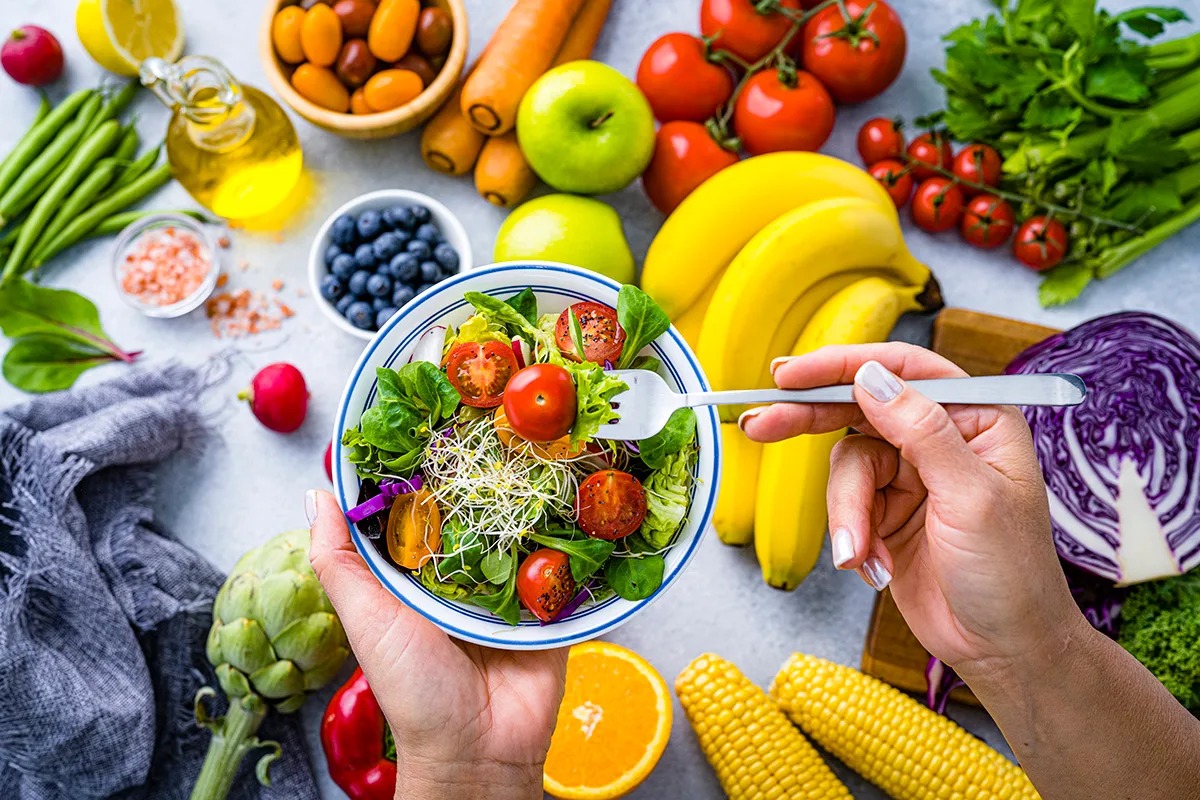
Plant-based eating has moved beyond a diet trend—it’s now a lifestyle choice embraced by people seeking better health, more energy, and a positive impact on the planet. Whether you're going fully vegan or just trying to add more vegetables to your plate, plant-based eating is about prioritizing whole, minimally processed foods from plants.
And the best part? It doesn’t have to be complicated. You don’t need to count calories or eliminate your favorite foods overnight. With a few thoughtful adjustments, plant-based eating can become an easy and enjoyable part of your routine.
Here’s how to simplify your approach to plant-based living while keeping meals delicious, satisfying, and nutrient-rich.
What Is Plant-Based Eating?
Plant-based eating focuses on foods that come from plants—vegetables, fruits, whole grains, legumes, nuts, and seeds. It doesn’t necessarily mean you must avoid animal products entirely (unless following a vegan or vegetarian diet). Instead, the emphasis is on increasing plant-based choices and reducing reliance on meat, dairy, and processed foods.
Key plant-based food categories include:
- Vegetables and leafy greens
- Fruits (fresh or frozen)
- Legumes (beans, lentils, chickpeas)
- Whole grains (quinoa, brown rice, oats)
- Nuts and seeds (almonds, flaxseeds, chia)
- Plant-based oils (olive, avocado, coconut)
Benefits of a Plant-Based Diet
Making the shift to plant-based meals—whether part-time or full-time—can support your health and the environment.
Health Benefits:
- Lower risk of heart disease and high blood pressure
- Improved digestion and gut health
- Better weight management
- Lower inflammation and blood sugar levels
- Increased intake of fiber and essential vitamins
Environmental Benefits:
- Reduced carbon footprint
- Less water and land use
- Decreased pollution and deforestation
Simple Tips to Start Eating More Plant-Based
1. Start with One Plant-Based Meal a Day
You don’t have to change your entire diet overnight. Start small with one meatless meal a day, like oatmeal for breakfast or a veggie stir-fry for dinner.
Try:
- Smoothies with spinach, banana, and almond milk
- Lentil soup or grain bowls
- Tofu or chickpea tacos
2. Make Easy Swaps
Replace common animal-based ingredients with simple plant-based alternatives:
- Dairy milk → almond, oat, or soy milk
- Ground beef → lentils, mushrooms, or plant-based crumbles
- Cheese → nutritional yeast or dairy-free cheese
- Yogurt → coconut or cashew yogurt
These swaps let you enjoy familiar dishes with a plant-based twist.
3. Bulk Up on Beans and Lentils
Beans, lentils, and chickpeas are rich in plant protein, fiber, and iron. They’re affordable, versatile, and perfect for stews, salads, and spreads.
Ideas:
- Chickpea curry
- Black bean chili
- Lentil bolognese
4. Stock Your Pantry with Plant-Based Staples
Having the right ingredients on hand makes plant-based cooking much easier.
Pantry Essentials:
- Canned beans and tomatoes
- Whole grains: quinoa, oats, rice
- Plant-based milks
- Spices and herbs
- Nut butters
- Pasta and whole wheat noodles
5. Build Balanced Plates
To stay satisfied and meet your nutritional needs, aim for balance:
- Protein: beans, tofu, tempeh, nuts
- Fiber: whole grains, veggies, legumes
- Healthy fats: avocado, olive oil, nuts
- Variety: mix different colors and textures on your plate
6. Don’t Overcomplicate Recipes
You don’t need gourmet skills or specialty ingredients to eat plant-based. Stick to simple recipes with 5–8 ingredients that come together in under 30 minutes.
Easy Meals to Try:
- Veggie stir-fry with brown rice
- Pasta with tomato and lentil sauce
- Buddha bowls with quinoa, roasted veggies, and tahini
- Avocado toast with hemp seeds and sprouts
7. Keep Healthy Snacks on Hand
Avoid the temptation of processed snacks by prepping plant-based options in advance.
Smart Snacks:
- Hummus with veggie sticks
- Trail mix with nuts and dried fruit
- Chia pudding with almond milk and berries
- Fresh fruit with nut butter
8. Listen to Your Body
Transitioning to a plant-based diet may come with changes in digestion and energy. Be patient with your body and make gradual adjustments. Stay hydrated and make sure you’re getting enough calories, especially if you’re very active.
What About Protein?
One of the most common questions about plant-based eating is how to get enough protein. Fortunately, plenty of plant foods are rich in protein.
Top Plant-Based Protein Sources (per serving):
- Lentils: 18g per cup
- Chickpeas: 14g per cup
- Tofu: 10g per ½ cup
- Quinoa: 8g per cup (cooked)
- Tempeh: 15g per ½ cup
- Nuts and seeds: 4–7g per ounce
By eating a variety of these throughout the day, you can easily meet your protein needs.
Final Thoughts
Plant-based eating is not about perfection—it’s about making mindful, nourishing choices that support your health and the planet. By starting with small, manageable changes, you’ll find that plant-based meals can be flavorful, filling, and fun to make.
Whether you’re trying “Meatless Mondays” or fully committed to a plant-powered lifestyle, you’re already making a positive impact. Keep it simple, stay curious, and enjoy the journey to better health—one bite at a time.